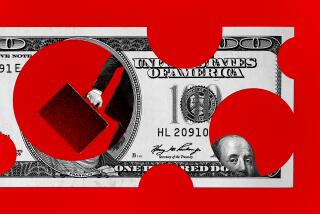Wall St. Wants Tax Cut Despite Near-Term Fear
- Share via
Wall Street is hungry for a capital gains tax cut--no question about that. But many investment pros concede worry over the short-term effect of a tax cut on the stock market.
If the top gains-tax rate for assets held more than one year is cut to about 20% from the current 28%, it could unleash a torrent of selling by investors who figure it’s a good time to take profits on stocks they’ve held for the duration of the 1990s bull market.
It’s impossible to quantify how many of those investors are out there, and how much they might sell. But the last time the gains tax was cut sharply--in June 1981, when it was reduced from 28% to 20%--the stock market began falling almost immediately.
The Standard & Poor’s 500-stock index sank from about 133 in mid-June 1981 to 104 by August 1982, a loss of 22%. The Nasdaq composite index tumbled 28% in that period.
Of course, there were plenty of other factors weighing on the market back then: still-high inflation, high interest rates and a growing concern that the global economy was on the verge of a severe depression. (It wasn’t.)
Today, owners of all sorts of capital assets (stocks, real estate, etc.) may well be tempted to harvest some gains if Uncle Sam trims his take. But with far more investors now in the market via mutual funds, rather than individual stocks, there may be less incentive to sell. After all, if you own a fund outside a tax-deferred account, you are receiving--and paying tax on--capital gains every year.
It’s also worth noting that even after the capital gains tax rate was raised again in 1988, the stock market didn’t suddenly come apart. In fact, the S&P; 500 index rose 12% in 1988 and 27% in 1989, as stocks continued to rebound from the 1987 market crash.
Whatever selling might be generated this time around, the long-term benefit for the economy should be that “frozen” capital is being liberated and, hopefully, put to better use--whether that is back into other stocks here or abroad or into bonds, real estate or other assets that investors view as relatively more attractive.
More to Read
Inside the business of entertainment
The Wide Shot brings you news, analysis and insights on everything from streaming wars to production — and what it all means for the future.
You may occasionally receive promotional content from the Los Angeles Times.










